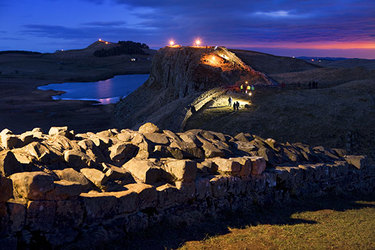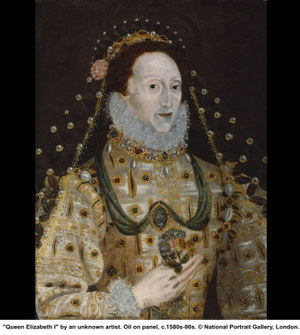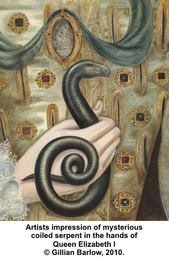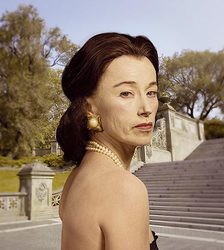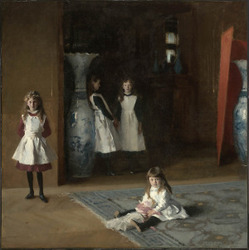
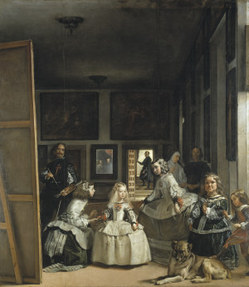 This week, the Prado welcomes one of the finest paintings in the collection of the Museum of Fine Arts, Boston: John Singer Sargent’s The Daughters of Edward Darley Boit, from 1882. It will hang next to Diego Velázquez’s masterpiece, Las Meninas, from 1656.
This week, the Prado welcomes one of the finest paintings in the collection of the Museum of Fine Arts, Boston: John Singer Sargent’s The Daughters of Edward Darley Boit, from 1882. It will hang next to Diego Velázquez’s masterpiece, Las Meninas, from 1656.
And that’s the beginning and the end of the exhibition (opening on Tuesday), just two works telling their stories. They have a connection, of course. Sargent was inspired by Velázquez’s compelling portrait — he visited the Prado frequently to study the painting. According to the MFA, Sargent made
a copy of the painting to help him analyze its composition, lighting, and the dynamics among the figures. Both paintings are centered on little girls who seem to know more than they are saying — five-year-old Infanta Margarita Teresa of Spain depicted by Velázquez, and four-year-old Julia Boit captured by Sargent.
The exhibit is the third in a Prado series called “The Invited Work,” which borrows one painting as a way to illuminate an aspect of its own collection. It’s an ingenious way, I think, to make museum-goers really look, to contrast, to compare. See for yourself, at left.
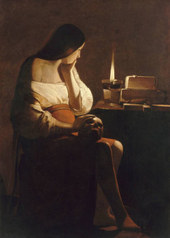
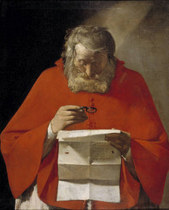 Of course, it helps to invite masterpieces that complement your own collection, and the Prado is lucky that way. It has one of the finest collections in the world, with something like 1,300 paintings regularly on view.
Of course, it helps to invite masterpieces that complement your own collection, and the Prado is lucky that way. It has one of the finest collections in the world, with something like 1,300 paintings regularly on view.
The “Invited Work” series began last April, when the Prado borrowed a painting by Georges de la Tour from the Louvre called The Penitent Magdalene. It hung with two de la Tour works in the Prado’s collection, St. Jerome Reading A Letter (attributed to him only in 2005) and Blind Musician. I’ve pasted them here, too.
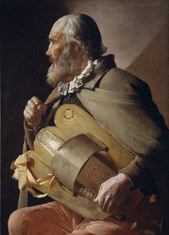 Last December, in between the de la Tours and the Sargent-Velazquez pairing, the Prado borrowed Company of Captain Reinier Reael, also known as The Meagre Company, by Frans Hals and Pieter Codde, from the Rijksmuseum (below). It was exhibited for three months in a gallery adjoining “Dutch painters at the Prado.”
Last December, in between the de la Tours and the Sargent-Velazquez pairing, the Prado borrowed Company of Captain Reinier Reael, also known as The Meagre Company, by Frans Hals and Pieter Codde, from the Rijksmuseum (below). It was exhibited for three months in a gallery adjoining “Dutch painters at the Prado.”
One- or two-painting shows aren’t unique, or even unusual nowadays. There was Michelangelo’s first painting at the Metropolitan Museum just last year, to name just one.
But as museums try to cope with having less money to spend, the fact that the Prado has begun a series of them seems noteworthy to me. Maybe it can even be emulated in some quarters here.
Besides, it’s a great excuse for me to display all these wonderful paintings.
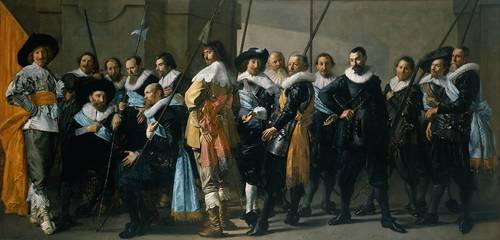 As van Gogh, according to the Rijsmuseum, said of The Meagre Company, “Just to see that painting would make the journey to Amsterdam worthwhile.”
As van Gogh, according to the Rijsmuseum, said of The Meagre Company, “Just to see that painting would make the journey to Amsterdam worthwhile.”
So far, the Prado is three for three on its choices.

